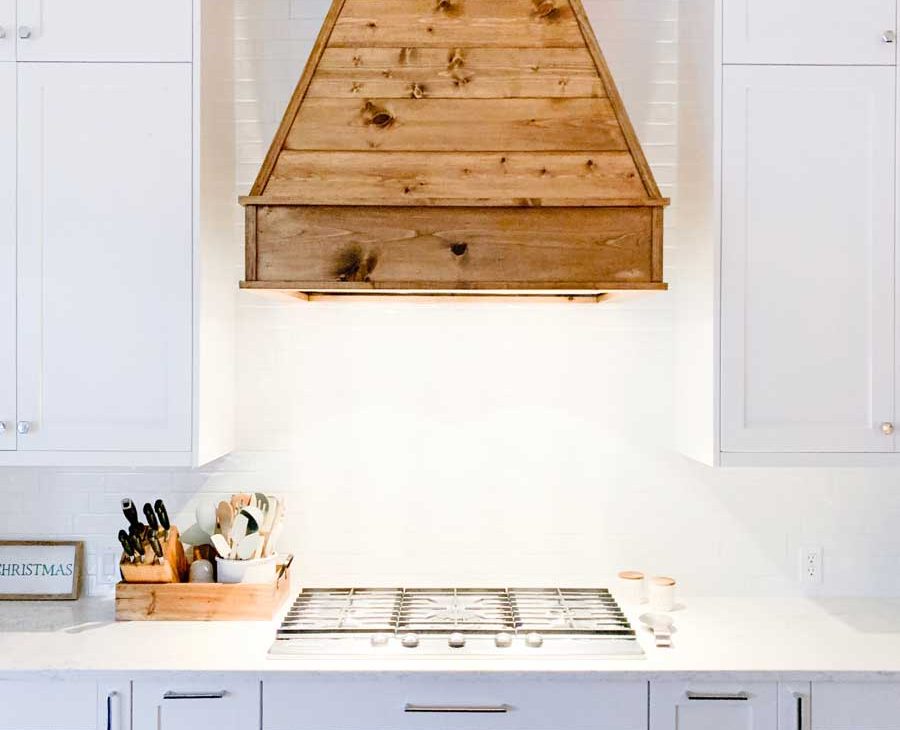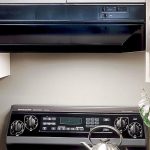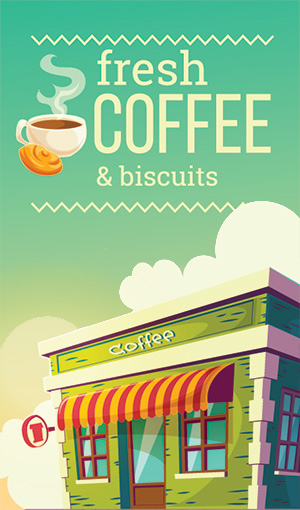Venting a range hood outside can cost anywhere from $150 to $500, depending on factors such as the length of the duct, the type of material used, and the complexity of the installation. Proper ventilation for your kitchen range hood is essential to keep your home free from smoke, grease, and unpleasant odors.
While it can be tempting to try to install the venting yourself to save money, it’s usually best to leave the job to the professionals. In this article, we’ll explore the factors that determine the cost of venting a range hood outside and provide tips to help you choose the right contractor for the job.
With the right venting system in place, you can enjoy a clean, healthy kitchen for years to come.

Credit: www.amazon.com
What Goes Into Venting A Range Hood Outside?
Why Venting A Range Hood Outside Is Essential
A range hood is a ventilation device that helps eliminate smoke, heat, and cooking odors that result from cooking on a stove or oven. It is essential to vent your range hood outside to maintain good indoor air quality and improve your kitchen’s overall ventilation.
Here are some reasons why venting your range hood outside is essential:
- Reduce fumes and carbon monoxide: Range hoods are designed to absorb fumes, smoke, and cooking odors, which reduces the amount of indoor air pollution, such as carbon monoxide.
- Prevent mold and mildew: Range hoods help prevent mold and mildew from developing in your kitchen by eliminating excess moisture.
- Maintain healthy indoor air quality: Venting your range hood outside improves your kitchen’s air quality, which helps you breathe better and prevents respiratory issues.
Understanding The Anatomy Of A Range Hood
Before venting your range hood outside, it’s essential to understand its basic anatomy. A typical range hood has the following components:
- Hood enclosure: This is the visible part of the range hood that covers the fan and filter assembly. It is usually made of stainless steel or aluminum.
- Fan: The fan is responsible for pulling cooking fumes, smoke, and odors from the stove or oven and pushing them through the ductwork to the outdoors.
- Filter: Range hood filters help capture grease, smoke, and other particles that come from cooking.
- Ductwork: The ductwork is the part of the range hood that connects the fan and filter assembly to the outside vent hood.
Vent Hood Installation Options Available
When it comes to venting a range hood outside, there are two primary options: ducted or ductless. Here’s what you need to know about each option:
- Ducted: A ducted range hood vents to the outside through ductwork, removing pollutants, smoke, and moisture from your kitchen. This option requires ductwork installation, which might require professional services.
- Ductless: A ductless range hood uses a filter to recirculate air back into your kitchen instead of venting it outside. This option requires changing the filter periodically to maintain the range hood’s effectiveness.
Final Thoughts
Venting a range hood outside is essential and can improve your kitchen’s air quality and overall indoor environment. Consider the type of hood installation that works best for your kitchen and hire professionals to help install the ductwork properly.
Pros And Cons Of Venting A Range Hood Outside
The Benefits Of Venting A Range Hood Outside
Improving indoor air quality is one of the most important benefits of venting a range hood outside. Here are some reasons why it’s a great idea:
- Smoke, steam, grease, and odor are extracted out of the house, which means that you breathe cleaner air.
- Cooking produces high levels of moisture, which, if not taken outside, can cause excessive condensation in your home.
- A range hood can also create negative air pressure, which means that external air is attracted through gaps, cracks, and walls. This can introduce pollutants like pollen, spores, and chemical fumes into your home.
- Venting outside can also reduce the amount of noise in your kitchen while you’re cooking.
Increased energy efficiency is another great advantage of venting a range hood outside, and here’s why:
- Range hoods with good airflow help your hvac system to work more efficiently, which means lower energy bills and reduced carbon emissions.
- A range hood will extract heat from your cooking space, preventing it from driving up the temperature inside your home. This means you won’t need to rely as much on your air conditioning system during the warmer months.
Reduced maintenance costs is yet another perk of venting a range hood outside, and here’s why:
- Cooking grease and oil can accumulate inside ductwork. This buildup increases the risk of fire, and it can also restrict the airflow.
- A range hood filter captures airborne grease. If you don’t replace or clean the filter regularly, it won’t work efficiently- but it may also create a fire hazard.
The Downsides To Venting A Range Hood Outside
Venting a range hood outside comes with a few downsides. Here’s what you need to know:
Costly installation:
- If your kitchen isn’t ideally positioned near an outside wall of your house, installation can be expensive and challenging. You may need to put in ductwork, and the further the ductwork needs to travel, the more costly the installation will be.
Building code regulations to consider:
- You’ll need to make sure that your hood and ductwork installation comply with your local building codes and regulations.
Potential weather-related issues:
- Depending on your climate, weather can complicate things. Heavy rain, snow, or wind can affect the efficiency of your vent hood, modify the air pressure in your home, and create drafts in your kitchen.
Factors Affecting The Total Cost Of Venting A Range Hood Outside
How much does it cost to vent a range hood outside
If you’re looking to renovate your kitchen, one of the things you might want to consider is installing a range hood. A range hood can help get rid of cooking smells, smoke, and grease, and prevent them from sticking to your walls and ceiling.
Venting a range hood outside is even better — but how much does it cost? In this post, we’ll discuss the factors affecting the total cost of venting a range hood outside.
The Type Of Range Hood Being Used
The first factor that affects the cost of venting a range hood outside is the type of range hood you’re using. There are two main types of range hoods:
- Ducted
- Ductless
Ducted range hoods vent air outside through ductwork, while ductless range hoods filter air and recirculate it back into your kitchen. If you already have a ducted range hood, it’s easier and cheaper to install a vent outside. However, if you have a ductless range hood, you’ll need to factor in the cost of ductwork installation.
The Type Of Ventilation System Chosen
After deciding on the type of range hood, the next decision to make is the type of ventilation system. Here are the two main types:
- Wall-mounted ventilation system
- Ceiling-mounted ventilation system
Many factors affect the installation cost of a wall-mounted ventilation system. The system’s quality, the length of the ductwork, and the number of bends in the ductwork affect the cost. Whereas, ceiling-mounted ventilation systems are generally more expensive due to higher installation costs.
The Materials Needed For The Installation Process
The materials required for the installation process can massively affect the total cost of the project. The following are some of the materials that you may need:
- Exhaust fan
- Ductwork
- Wall or roof cap
- Filters
- Wiring
Plainly, high-quality materials tend to be more expensive, so the total cost of materials will depend on the range hood’s quality.
The Location Of The Installation
The location of the installation is an important factor that affects the total cost of venting a range hood outside. A ground-floor installation is simpler and less expensive to install than a roof or a second-floor installation. If the installation location is far from the kitchen, then additional costs may arise because of an extended duct run and additional piping funds.
The Complexity Of The Installation Process
The complexity of the installation process can also impact the total cost of venting a range hood outside. If you have to install a new duct run or make any special modifications, then the cost can quickly rise. Additionally, if the installation requires cutting through walls, ceilings or roofs, the complexity of the installation process increases.
Conclusively, several factors affect the total cost of venting a range hood outside. The type of range hood being used, the type of ventilation system, the required materials, the location of the installation and the complexity of the installation process.
However, costs can vary. Therefore, it’s crucial to do research on current market prices and to hire a qualified professional for a reliable estimate before starting the project.
Understanding The Return On Investment (Roi) For Venting A Range Hood Outside
How Venting A Range Hood Outside Can Increase Property Value
If you’re a homeowner, you know how important it is to maintain and increase the value of your property. Venting a range hood outside can actually increase your property value by ensuring that your kitchen is a safe and comfortable place to cook in.
Here are some ways that venting a range hood outside can improve the value of your property:
- Increases kitchen air quality
- Minimizes the spread of cooking byproducts throughout the home
- Provides a safer cooking environment
- Enhances the aesthetic of the kitchen
Calculating The Roi For Venting A Range Hood Outside
Investing in venting a range hood outside may seem like a costly expense, but when you consider the long-term benefits and savings, it can be a wise investment for homeowners. Here are some key points to understand the roi:
- The initial installation of a range hood to vent outside can cost around $500 – $1000.
- The value of your home can increase anywhere from $1000 – $1500, making it a potential profitable investment.
- Venting a range hood outside can save you money in the long run by minimizing structural damage caused by excess moisture and heat.
Analyzing The Long-Term Savings And Benefits Of Venting A Range Hood Outside
Venting a range hood outside can provide both short-term and long-term benefits for homeowners. Aside from improving the air quality in your kitchen and reducing the risk of potential hazards, venting your range hood outside can also provide long-term savings in several ways.
Here are some of the benefits of venting a range hood outside:
- Reduces the build-up of excess moisture and heat, preventing damage to your walls, ceilings, and cabinetry.
- Reduces the spread of unpleasant cooking smells throughout the house.
- Decreases the likelihood of mold and mildew buildup, which can cause health problems.
- Prolongs the life of your kitchen appliances by reducing excess heat.
By investing in venting a range hood outside, homeowners can enjoy not only immediate benefits, but also long-term savings and an increase in property value.
Frequently Asked Questions On How Much Does It Cost To Vent A Range Hood Outside
How Much Does It Cost To Install A Range Hood Vent Outside?
It depends on factors like the distance between the hood and external wall, the type of vent and materials used. On average, the installation and materials cost range from $500 to $2,000.
Can I Vent A Range Hood Through The Roof?
Yes. However, it’s crucial to purchase a vent kit specifically meant for roof installation to prevent issues such as moisture accumulation that can lead to roof damage.
What Size Vent Hood Do I Need?
To determine the ideal size of the vent hood, take into account the width of your cooking range. For most standard ranges, a vent hood with a width of around 30 inches is recommended.
Why Is It Important To Vent A Range Hood Outside?
Venting a range hood outside eliminates smoke, fumes, and any airborne particles produced while cooking. Indoor air quality significantly increases, providing a clean and healthy environment.
What Type Of Range Hood Vent Should I Choose?
The two common vent types are ducted and ductless. It’s ideal to choose a ducted hood vent since it vents the smoke and fumes outside, unlike the ductless, which filters the air back indoors.
Conclusion
Based on our analysis, venting a range hood outside is a simple task that can be done by a professional for a reasonable price. The cost of this process largely depends on several factors such as the type of material used, the location of the vent, and the complexity of the job.
However, a standard price range can be estimated to be between $200 to $500, which includes the cost of labor. It is important to invest in proper ventilation for your kitchen as it improves air quality, regulates temperature, and removes unpleasant smells.
Moreover, ensuring that your range hood is vented outside reduces the risk of fire hazards and saves energy. So, don’t hesitate to opt for a professional to vent your range hood outside and enjoy the benefits of a well-ventilated kitchen.
Thank you for reading our guide on “how much does it cost to vent a range hood outside”.

Freda is a passionate foodie and kitchen gadget enthusiast. With over 10 years of experience in the culinary industry, Freda brings her expertise in testing and reviewing kitchen gadgets.





